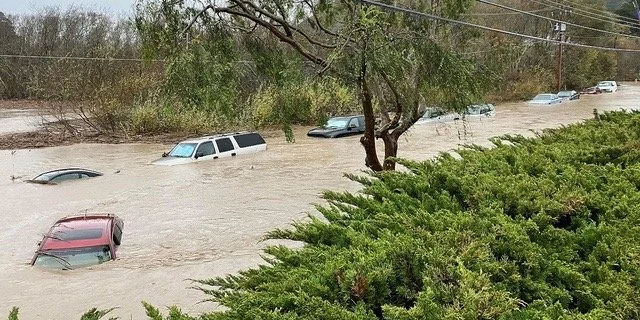Is there a connection between unnaturally intense wildfires and historic flooding in California (and beyond)?
Could it be that unnaturally intense wildfires in California during our summer/fall dry season are making floods during the winter wet season worse? According to a 2022 article in the esteemed scientific journal, Proceedings of the National Academy of Sciences, the answer is “yes”. As the authors summarize the significance of their findings:
How will increasing wildfire activity affect water resources in the water-limited western United States (WUS)? Among basins where >20% of forest burned, postfire streamflow is significantly enhanced by an average of approximately 30% for 6 y. Over 2015 to 2020, several large WUS basins experienced >10% of forest burned. Climate projections and an exponential forest fire response to climate-induced drying suggest the next 3 decades will see repeated years when WUS forest fire area exceeds that of 2020, which set a modern record for forest area burned. If so, entire regions will likely experience more streamflow than expected, potentially enhancing human access to water but posing hazard management challenges. Projections of water supply and runoff-related hazards must account for wildfire.
The reason for the link between huge wildfires and historic flooding isn’t all that hard to grasp. Not only can severely charred soils suffer from reduced rainfall infiltration and enhanced runoff. When an unnaturally intense wildfire kills hundreds of thousands of trees in a watershed, there is a LOT less vegetation taking up water to fuel plant growth (an effect that can last for years). Where does all that water go without thirsty trees sucking it up and converting it to new wood and leaves (through the process of photosynthesis, whereby plants convert sunlight, water and nutrients into carbohydrates/wood+leaves and oxygen)? It runs off into small creeks that make their way into larger creeks and eventually into rivers. When historic wet periods (as we are currently experiencing in California) follow soon after historic fire seasons (like 2020), floods are often particularly severe heavily burned watersheds.
Several fire and climate experts discussed this relationship in a fascinating Twitter thread last week. As wildfire expert, Zeke Lunder, noted about the likely effect of the 2020 Caldor Fire on the deadly flooding on the Cosumnes River during the December 31, 2022 storm:
Here is an image showing the Caldor Fire's burn severity. The red areas burned down to black sticks, while greenish areas had lower or mixed severity. The large high-severity patch from the fire's initial run is all within the Cosumnes River watershed, shown in blue.
The Embers Foundation’s Respond Program stands ready to help flood AND wildfire victims. Then once things dry out this spring and summer, our Rewild Program will get to work with our partners on projects that enhance watershed resilience to help prevent these types of disasters in the future.
To keep abreast of our efforts, please join our email list and follow us on social media! Of course, every tax deductible donation helps - and with Flying Embers covering our administrative costs, we are able to invest 100% of your contribution into our programs. Click here to donate.


